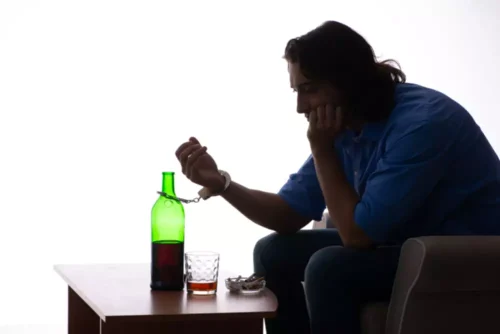Sober Living in Pennsylvania

IOP is a robust treatment program that provides flexible and comprehensive care. It also allows for close personal monitoring to address any potential issues before they lead to a full relapse. Although IOP is different than a residential rehab program, it is just as recovery-focused and works best when clients have access to a safe and sober home environment, such as a sober living home. Many people who are considering a halfway house may wonder what kind of restrictions will be in place. It’s only natural, as many good candidates for a halfway house have just completed a treatment program that was very restrictive of their freedoms.
Differences Between a Sober Living Facility and a Halfway House

We understand that these are probably the hardest questions and the most important ones you will have when you return to the community. We have a page on our website that lists contact information for many different categories of reentry resources by county in Maryland. Your probation officer can also refer you to agencies that will help you what is a halfway house get these services. There’s a short-stay rehab programme of up to 12 weeks, which focuses on intensive interventions, one-to-one therapy and the immediate side-effects of becoming alcohol or drug free. Our team can help you determine if your addiction treatment at Evoke Wellness could be at little to no-cost to you. Complete the form below and we will complete your insurance verification and get back with you shortly.
Sober living
- Living in a halfway house will provide you or your loved one with a safe, drug-free (and alcohol-free) environment.
- The facility provides job search support and expects residents to work full-time or actively pursue job opportunities.
- Residents live in a structured environment, follow daily schedules, participate in required programs, and are supervised by staff.
- Halfway houses provide an opportunity for this by setting schedules for the housemates.
- Some transitional housing programs partner with clinics and outpatient providers to ensure residents receive medication management, therapy, or psychiatric care.
- For many people in recovery, halfway houses provide a bridge back to life in the community.
A halfway house is a transitional living facility designed to assist individuals in re-entering society after completing rehab or other treatment programs. It offers a supportive and structured environment where residents can rebuild their lives, practice sober living, and prepare for independent living. Many facilities serve individuals transitioning from incarceration, homelessness, or mental health treatment who need a structured, supportive living environment. While addiction recovery is a primary focus, some halfway houses support mental health stabilization, employment reintegration, and independent living skills for various populations. Overcoming addiction and managing mental health challenges are critical parts of what is alcoholism a successful transition from incarceration to community life. Federal halfway houses recognize these needs and offer a range of services to support residents on their journey to recovery and stability.
Addiction Help Newsletter – Sidebar
The truth is that most folks who live in a halfway house go about their everyday lives. They go to school, attend their place of worship, work, and even visit with friends. There is also required participation in counseling, meetings, and being a good housemate through cleaning and other chores.
Understanding Drug Addiction & Treatment

We host nightly “family” dinners, weekly meetings, and regular outings to create an environment that promotes cohesive unity. The brotherhood between house members empowers everyone to walk through tribulations with much-needed support, and to meet our high standards. Our upscale facilities are comfortable and offer a great living space. Plus, open-mindedness means that you’re more likely to succeed after recovery!
Such technology not only enhances the ability to monitor and support residents effectively but also empowers individuals by giving them direct control over their recovery metrics and milestones. The spectrum of sober living homes is diverse, accommodating different recovery needs and stages. Halfway houses are often funded or supported by government agencies and might have stricter regulations or residency limits. These facilities typically require that residents either be coming directly from a rehabilitation program or have undergone some level of detoxification.
- All outings require prior approval, and residents must follow strict sign-out and return procedures.
- It outlines the facility’s rules, expectations, available programs, and residents’ rights and responsibilities.
- But many people begin drug use to escape part of their life that they can’t face, can’t handle, or feel they can’t take on sober.
- The hard fact is that getting clean and sober isn’t only about physical detoxification, as many drug rehab programs and treatment facilities would have you believe.
- As societal attitudes toward addiction and recovery evolve, there is an increasing focus on creating environments that not only facilitate recovery but also integrate technology and holistic support systems.
- These efforts will ensure that the future of sober living not only meets the dynamic needs of individuals in recovery but also integrates seamlessly with broader societal advancements.
- Some facilities offer co-ed housing with designated male and female sections, but most prioritize gender-specific environments to reduce distractions and reinforce accountability in recovery.
- Sober living homes can also be a house that rents out rooms under the guise of being a “sober living home,” these are places to watch out for.
- Deciding which is right for you depends on your specific needs and the severity of your addiction.
- This community aspect not only alleviates feelings of isolation but also builds a shared sense of responsibility and accountability toward maintaining sobriety.
With the right halfway house, you increase your chances of maintaining sobriety long-term. To have the best chance for effectively recovering from addiction or substance abuse and remaining sober long-term, individuals should look for drug-free, stable housing that will support their recovery. The majority of halfway house residents have already completed a medical detox program and are committed to staying sober. Some may have been court ordered to be there, while others choose to live and heal there on their own.

What is it like to live in a halfway house?

The primary purpose of a halfway house is to promote accountability, sobriety, and personal growth among residents. By offering structured living conditions, these facilities create an environment that encourages long-term recovery and successful reintegration into society. Securing employment and managing finances are two of the most important steps toward independence while living in a federal halfway house.
投稿日: 2024年12月20日運営長崎真珠

